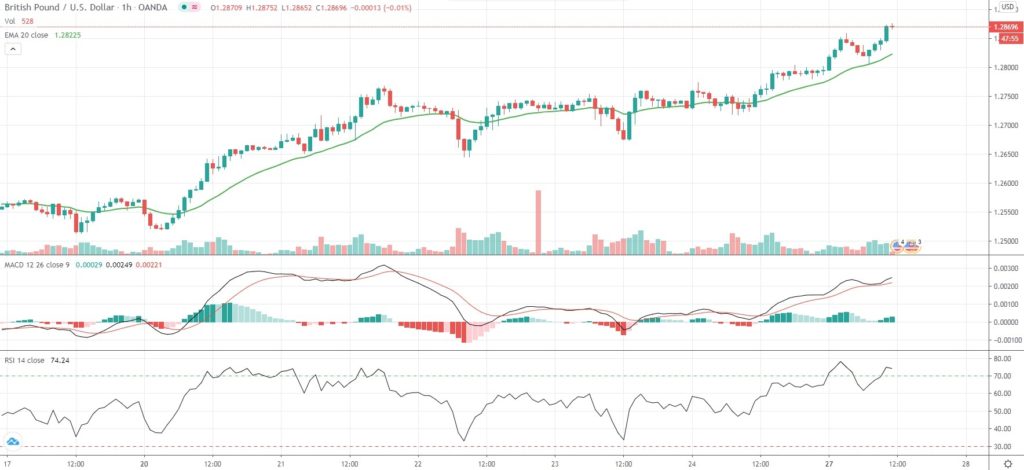GBP/USD extended gains from the past several trading days and touched highs not seen since mid-March on Monday, as the Sterling benefited mostly from a broadly weaker dollar amid lack of other major drivers.
“It should be more of the same for GBP this week. It is a very quiet week on the UK data front with the currency to remain the laggard and the underperformer in the European G10 FX space,” Petr Krpata, currency and rates strategist at ING, wrote in an investor note.
According to Krpata, “with news headlines suggesting an increased perceived probability of no deal, there is a little to be optimistic about for GBP.”
Several media reported last week that the United Kingdom had abandoned hopes to sign a post-Brexit trade deal with the European Union, while the UK government’s working assumption was the country would trade with the bloc on World Trade Organisation terms.
Meanwhile, the US Dollar faced selling pressure as market players were expecting the outcome of the Federal Reserve’s policy meeting on Wednesday, at which the bank could signal another accommodative shift in its outlook and once again stress on the benefits of an average inflation objective.
As of 11:14 GMT on Monday GBP/USD was gaining 0.59% to trade at 1.2870, after earlier touching an intraday high of 1.2875, or a level not seen since March 11th (1.2977). The major pair advanced 1.80% last week, as it registered its best performance since the business week ended on June 5th. GBP/USD also looked set for its second straight month of gains and the best monthly performance since October 2019.
In terms of economic calendar, today’s focus will be on the US durable goods orders report at 12:30 GMT. New orders for manufactured durable goods probably rose 7.2% in June from a month ago, according to market expectations, following a 15.8% increase in May. The latter has been the sharpest rate of increase in durable goods orders since July 2014.
The value of durable goods orders, excluding transportation items, probably rose at a monthly rate of 3.5% in June, according to expectations, following another 4% gain in May.
Bond Yield Spread
The spread between 2-year US and 2-year UK bond yields, which reflects the flow of funds in a short term, equaled 25.3 basis points (0.253%) as of 10:15 GMT on Monday, up from 23.8 basis points on July 24th.
Daily Pivot Levels (traditional method of calculation)
Central Pivot – 1.2772
R1 – 1.2826
R2 – 1.2858
R3 – 1.2912
R4 – 1.2967
S1 – 1.2740
S2 – 1.2685
S3 – 1.2653
S4 – 1.2621






